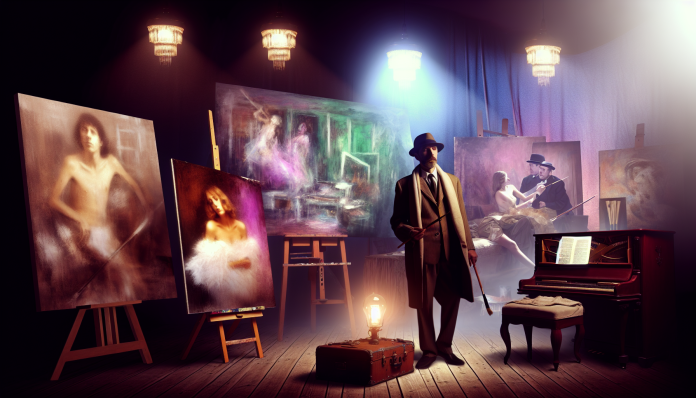Introduction
David Herbert Lawrence, an English novelist and poet, was one of the most controversial figures of the early 20th century. Renowned for his richly detailed explorations of human sexuality and the complexities of personal relationships, Lawrence’s works—especially Lady Chatterley’s Lover—became the epicenter of a scandal that stirred not just literary circles but societal norms. Set against the backdrop of post-World War I England, a period marked by strict moral codes and a burgeoning quest for personal freedom, Lawrence’s provocatively candid approach to sexuality incited outrage. This article delves into the scandal of Lawrence’s banned erotic novels and the impact of his tumultuous affairs, exploring how reactions to these events reflect the changing tides of sexual culture.
The Scandal
The scandal was ignited in 1928 with the publication of Lady Chatterley’s Lover, a novel that candidly portrayed the physical relationship between an aristocratic woman and her gamekeeper. The book was characterized not only by its explicit content but also by its poignant critique of class and industrial society. Initial reactions ranged from indignation to fervor, as critics and readers alike grappled with its bold themes.
Key events in the scandal included:
- Publication and Reaction: Released in Italy due to stricter British obscenity laws, the novel soon found its way into the hands of British readers, causing public uproar.
- Legal Battles: In 1960, it wasn’t until the Penguin Books trial that Lady Chatterley’s Lover was finally reviewed in a courtroom, where the defense argued for literary merit rather than superficial sexual content.
- Quotes and Perspectives: One notable response came from the writer and critic Sir Malcolm Muggeridge, who referred to Lawrence as “the first writer to bring unadorned sexuality into the realm of literature,” underscoring the tension between admiration and outrage.
Lawrence’s personal life further fueled the scandal. His passionate affairs, particularly with Frieda Weekley, a German woman who was his wife, frequently drew public scrutiny. Their unconventional marriage defied the era’s rigid gender expectations, serving as both inspiration and irritation to contemporary moralists.
Moral and Cultural Analysis
Societal reactions to Lawrence’s works and life can only be described as polarized. On one hand, the conservative elements clutched at their pearls, appalled by the explicit depictions of sex as not only biological but also as a force of spiritual connection. The backlash often took the form of:
- Censorship: Numerous editions of his novels were banned or heavily edited, sparking a broader conversation about the freedom of expression and the role of censorship in literature.
- Public Backlash: Critics deemed Lawrence’s themes as “immoral” and “cheap,” while supporters heralded him as a pioneer of modern literature who liberated the depiction of sexuality from Victorian constraints.
In stark contrast, today’s emergence of various media platforms has transformed access to erotic literature. Modern values approach Lawrence’s themes with less indignation, viewing them as historical markers of sexual liberation rather than moral failure. The ongoing debates surrounding consent, gender dynamics, and sexual freedom reflect a society much more open to discussions of eroticism in art and literature.
- Present-Day Perspective: If Lawrence were to write today, he might be celebrated for his explorations of intimacy and emotional connection rather than vilified for his candor. Works similar to Lady Chatterley’s Lover find significant readership and critical acclaim, rescuing Lawrence from the shackles of his scandalous past.
In this light, D.H. Lawrence’s infractions against society’s moral code stand as a testament to the evolving landscape of sexual discourse, marking a transition that continues to influence the modern understanding of literature, relationships, and sexuality. The scandal—and Lawrence himself—reflect the complicated interplay between art and societal expectations, serving as a historical reminder of the conflicts surrounding sexual expression that echo even today.

